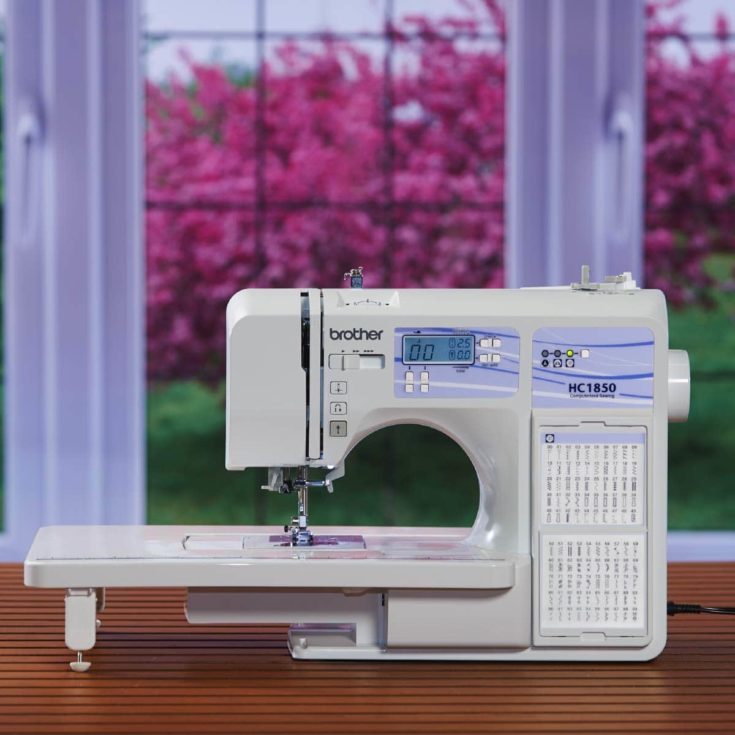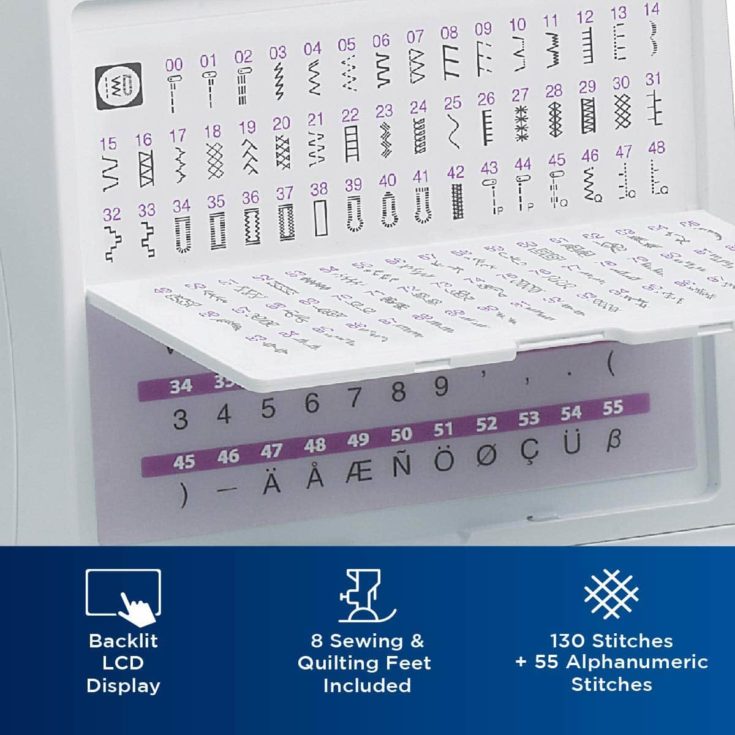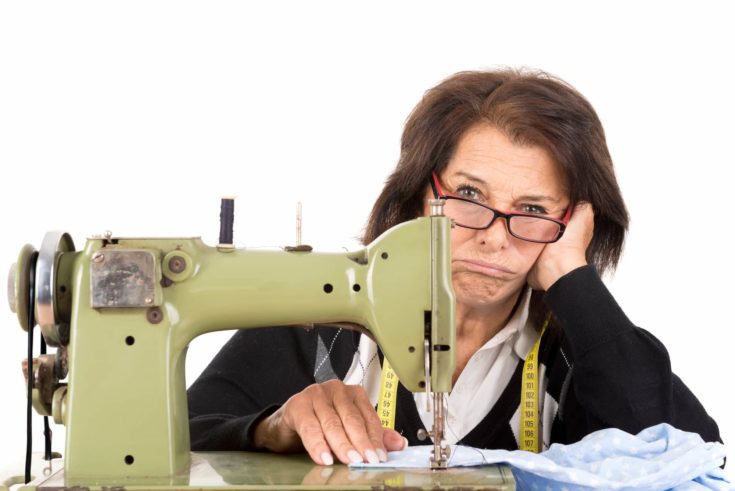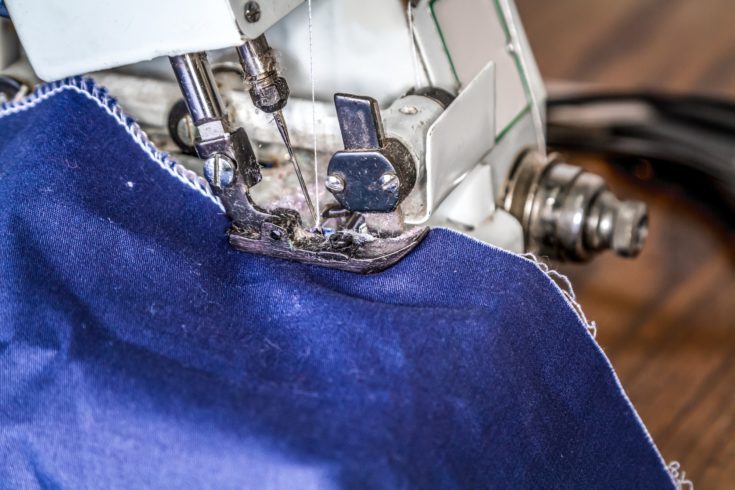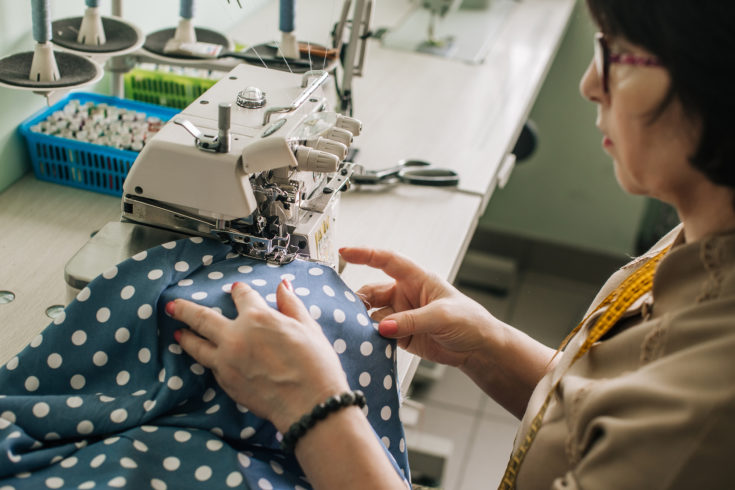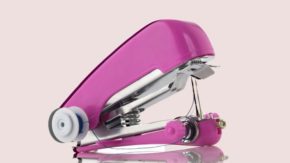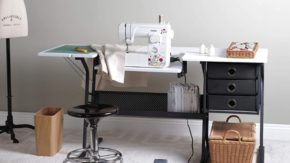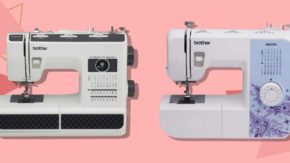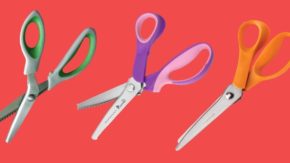If you’re new to sewing, then you may be wondering: what on earth is a serger? A serger is a specialized type of sewing machine used primarily to create sturdy and professional-looking finished edges on a piece. It prevents the fabric from fraying over time and trims seam allowances automatically.
Still, it lacks the versatility of traditional sewing machines and can’t perform functions like zippers, buttonholes, and top-stitching. In this article, we’ll compare sewing machine vs serger to determine the differences between the two and help you figure out which one to use for your next project.
Sewing Machine vs Serger Comparisons
| Sewing Machine | Serger |
|---|---|
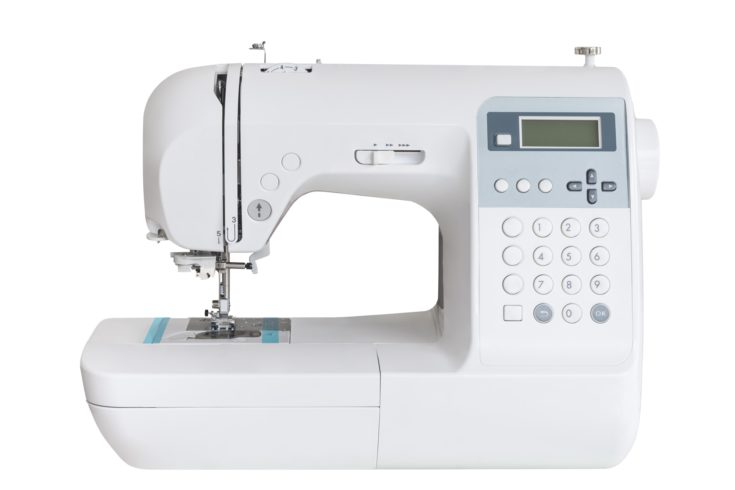 |
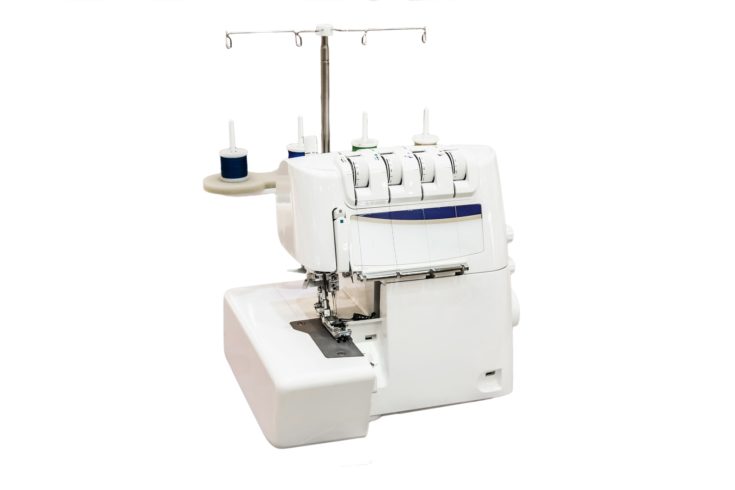 |
|
|
Sewing Machine
Features
Sewing machines have been around since the 18th century and are the classic device for anyone wanting to stitch two pieces of fabric together. Because they only feature a single needle and bobbin, they are easy for beginners to thread and set up.
While most modern machines are electric, the simplest models are entirely manually operated, and even the most high-tech machines feature adjustable hand-controls for things like needle position and speed.
They also typically carry a variety of stitches including zig-zag and decorative options, with many boasting additional features such as an automatic buttonholer.
Uses
Sewing machines have virtually limitless capabilities. They can be used for making clothes, embroidering designs, constructing and top-stitching intricate quilts, and creating all sorts of DIY crafts from pillow covers to passport holders.
Although sergers are better suited for tasks like hemming and seaming, sewing machines can perform these functions as well! Certain computerized sewing machines even come with the option to program your own custom stitch patterns.
Advantages
- They are easy for beginners to use. The majority of sewing projects can be beautifully made and finished entirely on a basic machine. These machines are perfect for first-time users interested in learning the basics of sewing, but still have enough customizable features to challenge and engage even an advanced sewer.
- They are best for design. The beauty of the sewing machine is that it gives you complete freedom over your work. Whereas a serger can only perform one function, a sewing machine has virtually limitless capabilities. You can drop the needle at any point on the fabric, you can create top-stitched designs and interesting detail work, and you can easily maneuver the fabric to correct for mistakes.
- They are available at a wider variety of price points. Machines continue to get more and more advanced, offering luxury features like automatic threading and computerized programming. However, simple machines still offer a large number of functions and it is possible to find a wider range of models from bargain prices to more high-end products.
Limitations
- Some fabrics simply do not perform well with standard sewing. Unlike conventional woven fabrics, knit fabric is made from a single thread that is looped over itself, resulting in a fabric that stretches more than the thread does. While it is possible to work with knits on a conventional machine, you are likely to encounter several challenges, including stitches that easily break apart and thread that snaps.
- It’s impossible to get perfect finishing lines. Even if you are the best seamstress in the world, you won’t be able to match the finishing precision of a serger using a basic machine. You have to cut the fabric by hand and rely on visual approximation to line up your stitches and edges.
Serger
Features
Unlike standard sewing machines, the serger uses anywhere between 3-5 threads at one time and uses a special type of overlocking stitch to simultaneously sew the seam, trim off the raw material, and finish the edges. The multiple threads lock around the edge of the fabric to eliminate fraying while a blade attached to the machine cuts off the seam allowance.
Sergers are also fully automatized. Although the stitch-width can be adjusted, they always perform the same type of stitch and eliminate the need for speed control.
Uses
What the serger lacks in flexibility, it makes up for inefficiency. Sergers operate at speeds several times faster than sewing machines. They also eliminate the time you spend cutting seam allowances and finishing hems.
Overall, they are much better suited for garment construction and make it easier to mass-produce projects. They are also far better at handling knit fabrics and stretchy materials, as well as performing functions like gathering and piping.
Advantages
- They are far more efficient. Sergers operate at a single speed many times faster than the highest setting on any given sewing machine. This is especially beneficial for simple projects that don’t require a lot of structure. Projects like pajamas, blankets, or tote bags can be completed in far less time.
- They give projects a professional look. If you love making clothes or you’ve ever considered selling your work, then a serger is an absolute must-have. Sergers improve the uniformity of your seams and are the key to producing quality, long-lasting garments.
- They can be used to create specialty edges. Tension in the Serger can be altered to create specialty designs like lettuce edges!
Limitations
- They are often a secondary device. Because the overlocking stitch is inherently stretchy, sergers do not produce the strongest seams when used by themselves. Anytime you are working with woven fabrics, you will want to straight-stitch all of your seams on your sewing machine first, before going over them with the serger for added longevity and a professional quality look.
- They are difficult to control. Because sergers operate at high speeds and cut the fabric while stitching, they take away a lot of the manual labor and control required for sewing. This makes it far more difficult to identify and correct for uneven seams.
Conclusion
If you are just beginning your sewing journey, then you likely won’t need a serger right away. Sewing machines are easier to set up, offer more design flexibility, and come in a wider range of models and price points. They may not lead to perfect finishes, but they do offer unparalleled versatility and control over the sewing process.
However, sergers are a great investment for anyone looking to take their work to the next level. They are more efficient and lend a professional appearance to any project. While you’ll still need to use your sewing machine for initial construction and detailing, your serger will make hemming and finishing significantly easier. It can also simplify the process of working with knit fabrics or creating decorative edges.
